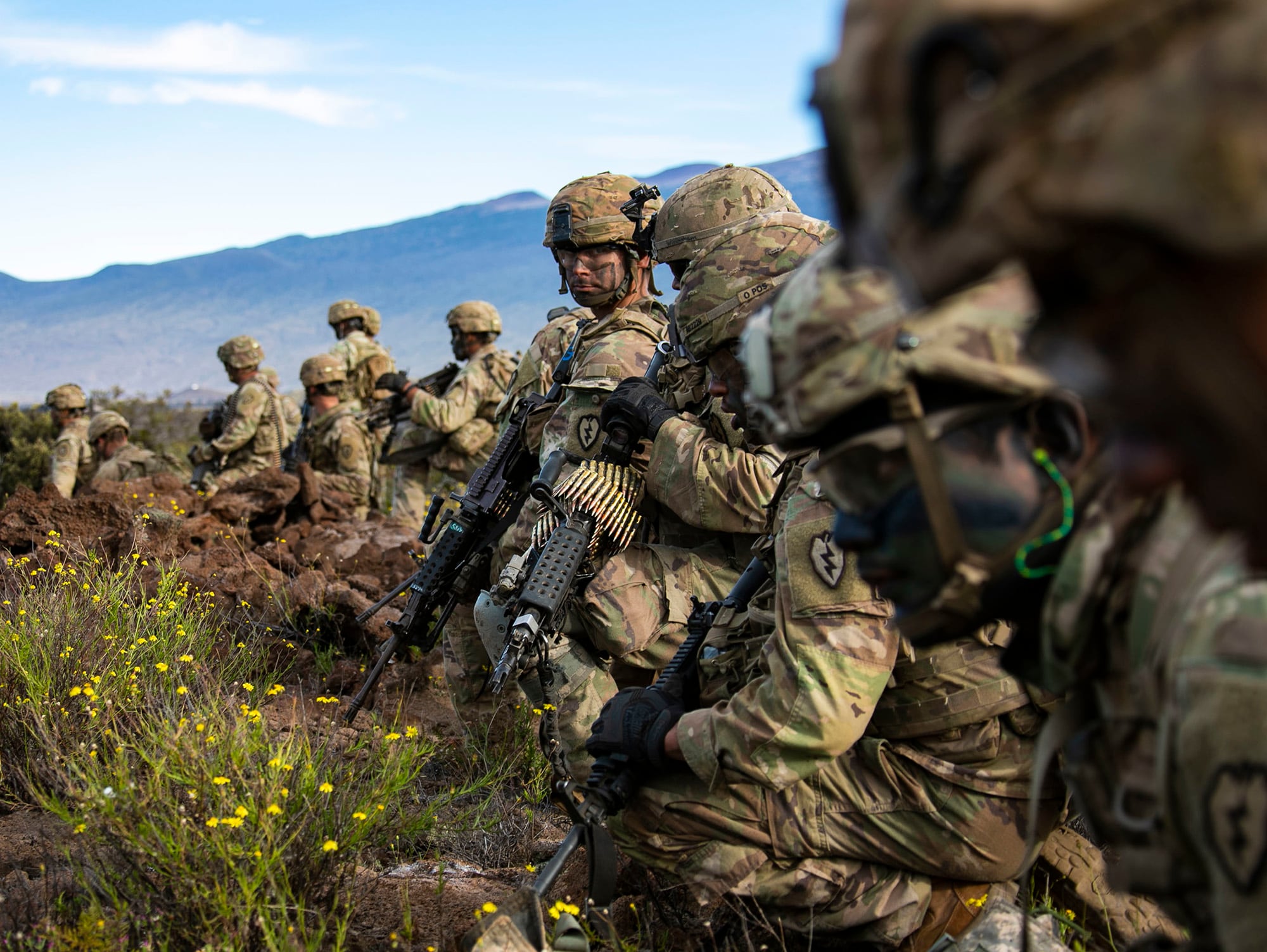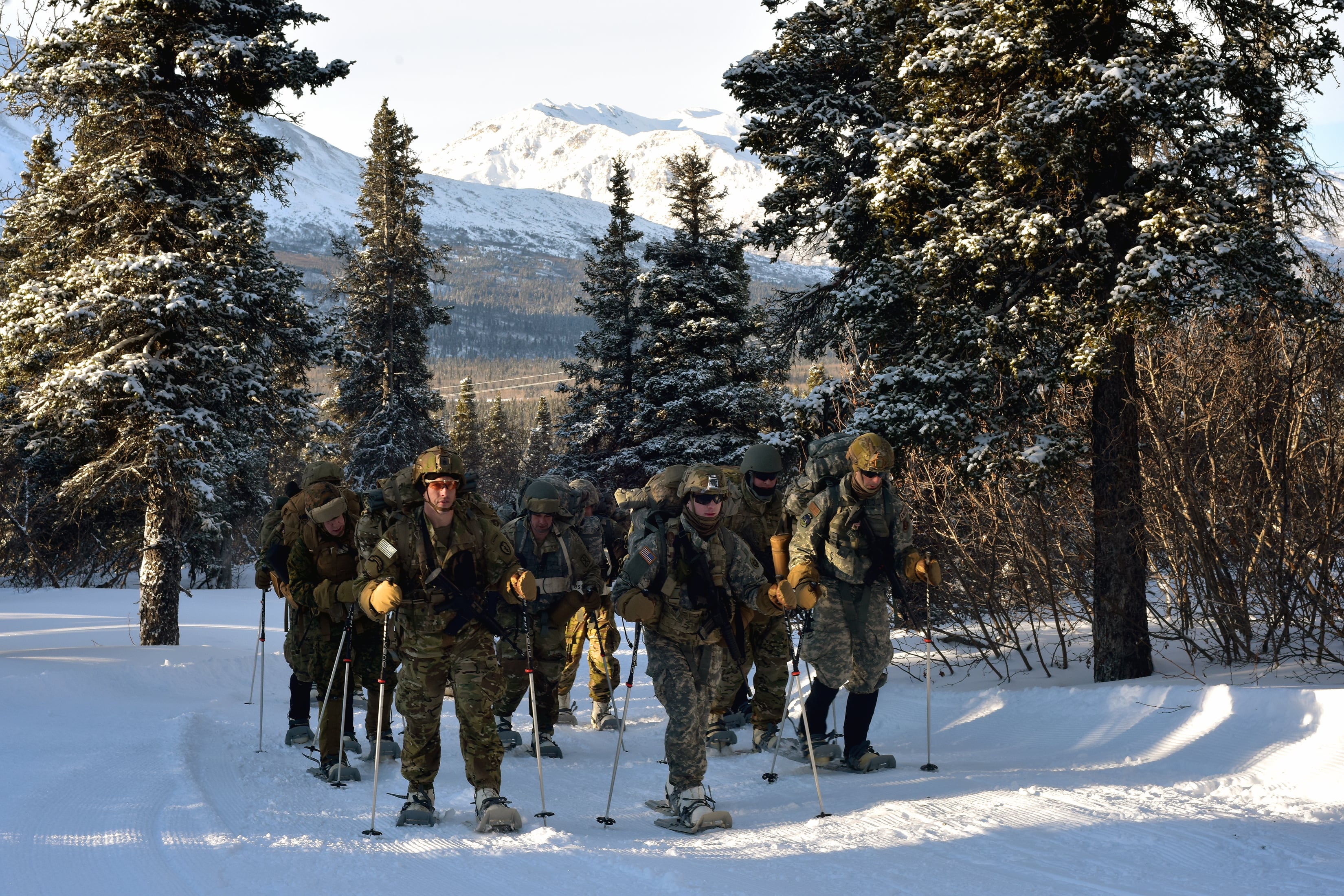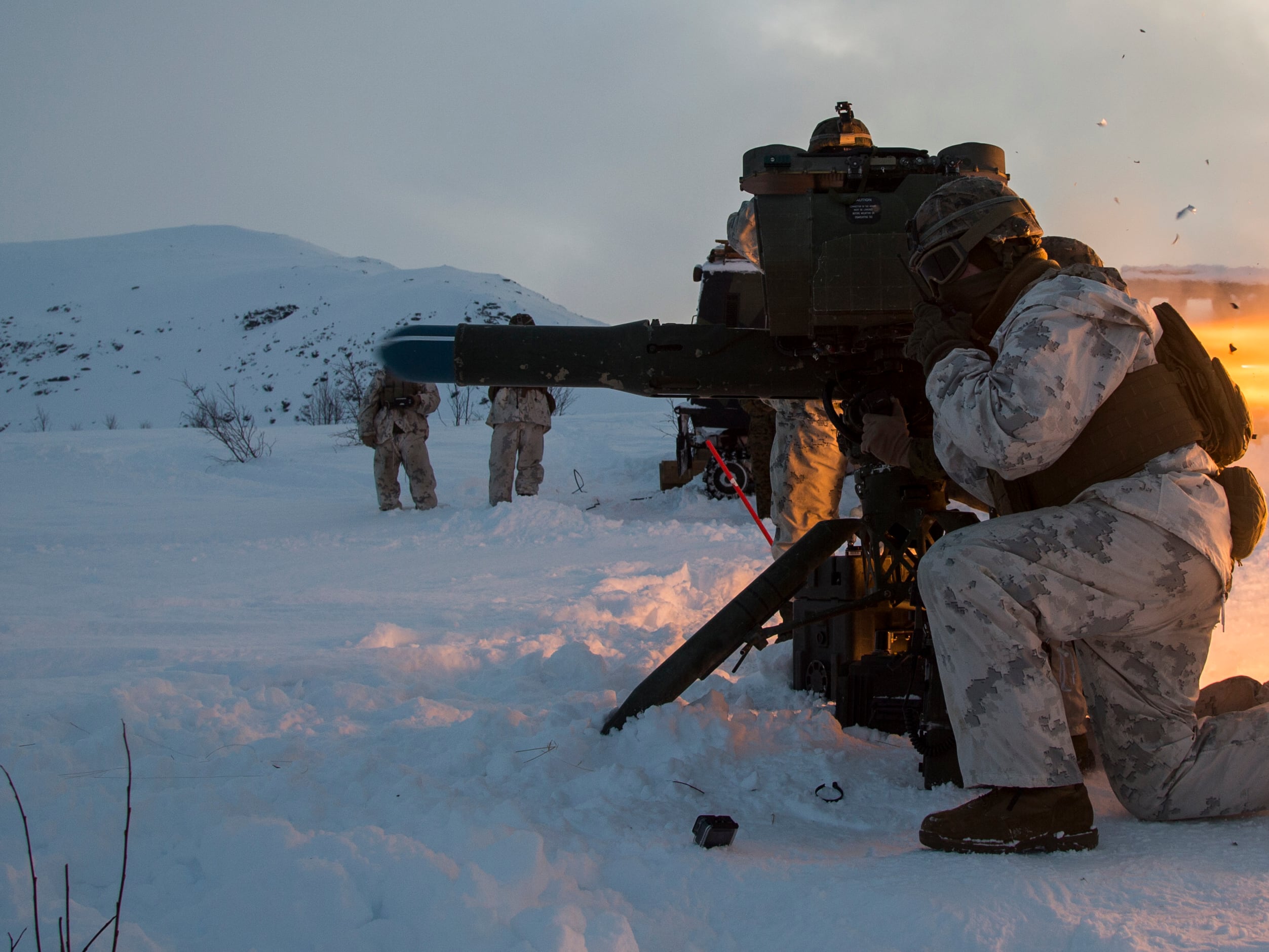U.S. Army Alaska has struggled to be the service’s proponent for cold weather warfare amid two decades of missions that push it’s units out to far different environments, namely the Middle East, according to Army Alaska commander Maj. Gen. Peter Andrysiak.
“The Army went through a massive transformation and it went to a [brigade combat team]-centric Army to standardize the equipment and organizational structure,” Andrysiak said Friday. “So the equipment was largely very similar across the force and we no longer had niche capabilities to operate in very unique environments.”
But that’s changing this winter. The command has been purchasing more skis, snowshoes, large tents and other equipment to train troops on cold-weather survival as they prepare to start an annual brigade-level exercise in February called Arctic Warrior, Andrysiak told a discussion panel hosted by the Wilson Center’s Polar Institute.
There is also another line of effort underway to find soldiers well-tuned to the Arctic environment. The initiative could start by grabbing volunteers from the Center for Initial Military Training, but it eventually seeks to recruit soldiers who grew up in cold weather environments to serve in Army Alaska units.
RELATED

Andrysiak’s team will also analyze Army Alaska’s mountaineering course as they prepare to train with the Indian Army in the Himalayas, a mountainous region where Indian and Chinese forces have brawled over border disputes in recent months.
Yudh Abhyas, a bi-annual exercise with Indian forces that has been regularly held at Joint Base Lewis McChord in Washington state over the past decade, will now be focused on Arctic warfare.
“The focus is no longer the desert, or that type of training. The focus is mountainous, cold environments,” Andrysiak said. “In 2021, we’ll host them in Alaska. In 2022, it’s supposed to be in the Himalayas.”
The revamp will help soldiers assigned to Alaska better mesh with foreign partners in Asia — the part of the world Army Alaska’s parent organization, Indo-Pacific Command, is tasked with overseeing.
“We have to redefine our relationships so they’re not just based off airborne capabilities, but they’re based off cold-weather capabilities,” Andrysiak told the panel of experts. “Part of that is ... India, [but] we’re looking at the rest of the INDOPACOM partners.”

Army Europe commander Gen. Christopher Cavoli also recently asked for Army Alaska to get out and train with European Arctic nations, like Norway, according to Andrysiak.
Norway can offer U.S. soldiers valuable lessons, Andrysiak noted, like how to operate two different fleets of equipment: one for cold, harsh winters and one for insect-heavy, but lush summers.
“That’s the only way we’re going to figure out where to go, is to learn from our partners who have been investing, living in this environment,” Andrysiak said. “So we’re going to expand that to our European partners.”
RELATED

Andrysiak said his offices are working with Army Recruiting Command to source more soldiers from Alaska, Colorado and places with similar weather and terrain. They hope that those recruits will already be accustomed to the cold and its deleterious effects on batteries, energy consumption and the human body.
The recruiting effort would “streamline those that have unique skill sets” to operate in the region, said Andrysiak, adding that Recruiting Command thinks the effort is “very possible.”
In the meantime, Army Alaska wants to source more volunteers from soldiers still in training, rather than rely solely on picking soldiers at random to head to its northern outposts — a difficult duty station for soldiers who are unfamiliar with long, dark winters and short, but vibrant summers.
“How do we query [trainees], raise their hand and get them up here,” Andrysiak added. “Versus now, it’s a little bit more of a random process who winds up here.”
Kyle Rempfer was an editor and reporter who has covered combat operations, criminal cases, foreign military assistance and training accidents. Before entering journalism, Kyle served in U.S. Air Force Special Tactics and deployed in 2014 to Paktika Province, Afghanistan, and Baghdad, Iraq.




